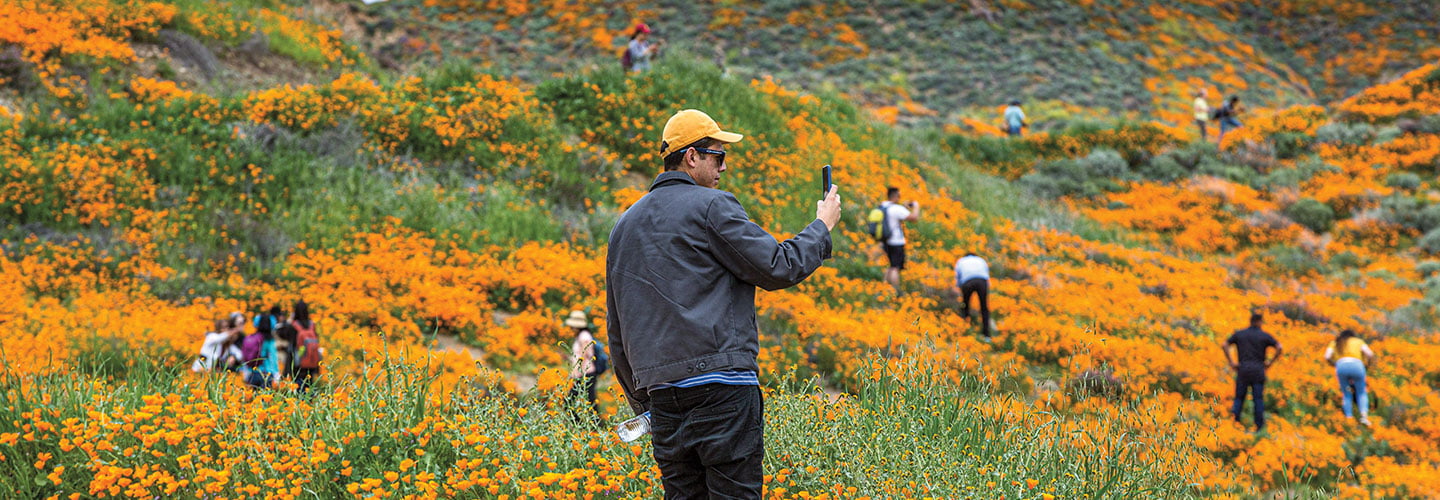In February 2019, the fields around Lake Elsinore, California, exploded with color. Thousands of bright-orange poppies burst into bloom. It was a beautiful sight—the flowers and the hills and the clear blue sky.
Then the people arrived.
It started with a few posts on Instagram. News of the poppy bloom spread quickly. Soon, more than 100,000 visitors clogged the tiny town. They left the trails looking for the perfect photo. They picked blossoms and stomped on flowers. Finally, the town’s mayor tried to block off the poppy fields. He begged people to stay away.
Nature lovers began to blame social media for the mess. They responded to poppy photos on Instagram with angry comments. “Stop ruining the flowers for your selfish selfies,” one person wrote.
In a few weeks, the flowers—and the crowds—were gone. But a big question remained: Is social media bad for nature?
Lake Elsinore, California, is surrounded by fields. In February 2019, the fields became colorful. Thousands of poppy flowers bloomed. They were bright orange. It was a beautiful sight.
Then the people came.
It started on Instagram. A few posts showed the flowers. News of the poppy bloom spread quickly. Soon, the tiny town had more than 100,000 visitors. They wanted the perfect photo. They walked off the trails. They stomped on flowers. They picked flowers too.
People who love nature blamed social media for the mess. They made angry comments on poppy photos on Instagram. “Stop ruining the flowers for your selfish selfies,” one person wrote.
In a few weeks, the flowers were gone. The crowds were gone too. But a big question remained: Is social media bad for nature?
In February 2019, the fields around Lake Elsinore, California, exploded with color as thousands of bright-orange poppies bloomed. The flowers, green hills, and clear blue sky made for a beautiful site.
Then the people arrived.
A few posts on Instagram were all it took. News of the poppy bloom spread quickly, and soon more than 100,000 visitors clogged the tiny town. In search of the perfect photo, they left the trails. Along the way, they picked blossoms and stomped on flowers. Finally, the town’s mayor attempted to block off the poppy fields and begged people to stay away.
Many people blamed social media for the mess. Nature lovers angrily responded to poppy photos on Instagram. “Stop ruining the flowers for your selfish selfies,” one person wrote.
After a few weeks, the flowers—and the crowds—were gone. But an important question remained: Is social media bad for nature?

